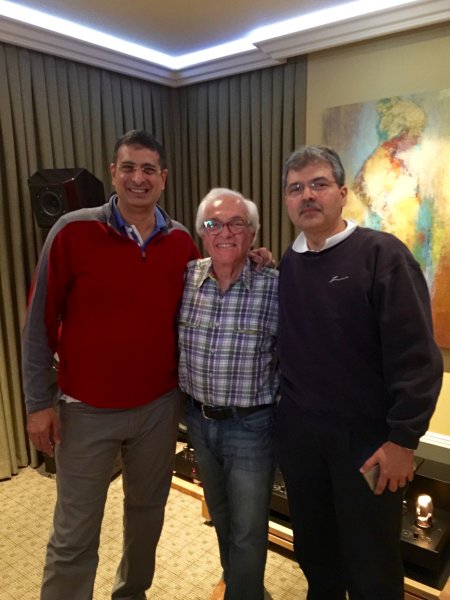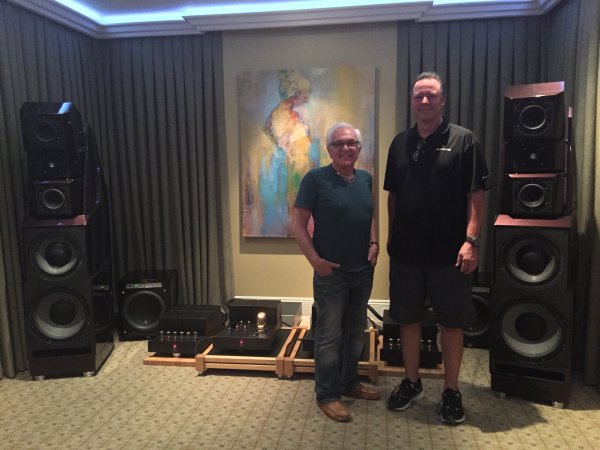For me however the more important issue was Peter's comment (on which I agree) that horizontal movement of a speaker is not a good thing.i wish I could tell you why i had that magic moment with Ultra 5's under my speakers and subs but just an OK moment under my amps
Movement in the horizontal plane cannot possibly be good for speakers, it's the same problem as if using casters. Perhaps the weight of your speakers affords no such movement in your case, but in general, an unwanted attribute for speakers.
All right folks, let's put this matter of horizontal movement of speakers to bed. First recognize some facts:
A) All matter on heaven and earth moves.
B) All matter is constrained in an infinite web of forces which cause forced damped oscillating motion in constantly changing directions.
C) If your speakers are well fixed to a strong heavy floor with spikes or bolts or glue, they will have horizontal motion that increases with the height of the cabinet, according to the flexing of the floor, the behavior of the contacts between cabinets and the floor, and the flexing of the cabinets.
The result of C) in a good system *without* bearings like Stillpoints can be modeled by the cabinets attached to the floor with very stiff springs. When a woofer moves in response to an input signal, it moves mostly horizontally. So basically the cabinet rocks on its stiff springs in a damped
pendular oscillation until it rests. Another transducer, let's say a midrange dome, does the same thing. And external air pressure from ambient music does the same thing. Result? Three
oscillating pendular motions of the cabinet: the thing is like a Reagan doll waving in the window of a moving car. The excursions are too small to see but they damn well matter at audio frequencies.
Instead of springs under the cabinets, imagine you had them on essentially perfect (ultra low friction) ball bearings. The vertical component of the pendular motion is unchanged. But the horizontal component, which has by far the greatest energy, is no longer a spring because it isn't constrained, it travels freely. So now the cabinet accelerates horizontally as the SUM of the horizontal forces, it no longer oscillates!
Well that's great for sound, but what if your cabinet gradually rolls across the room? You fix that by making the bearing surface slightly concave, so the cabinet *returns* to its lowest-energy, bottom position, its ground state. But...that means you've simply created another kind of spring beneath the cabinet! It is, but now it has a period outside the audio range, let's say 0.2Hz. Now that doesn't make a perfect base for your cabinet, but the best possible one that is affordable.
To recap:
1) Horizontal cabinet movement *is* desirable, provided it is 1) not oscillating near audio frequencies; 2) not pendular; 3) in a spring system with a very low resonant frequency; and 4) constrained to a reasonable distance of travel.
2) Effective bearing systems enable the speaker to create far less distortion from cabinet movement than previous methods.
3) High mass is still a proven and predictable method of reducing loudspeaker distortion. Also the stiffness and damping of the floor and of the cabinet still matter, but still.....points.



